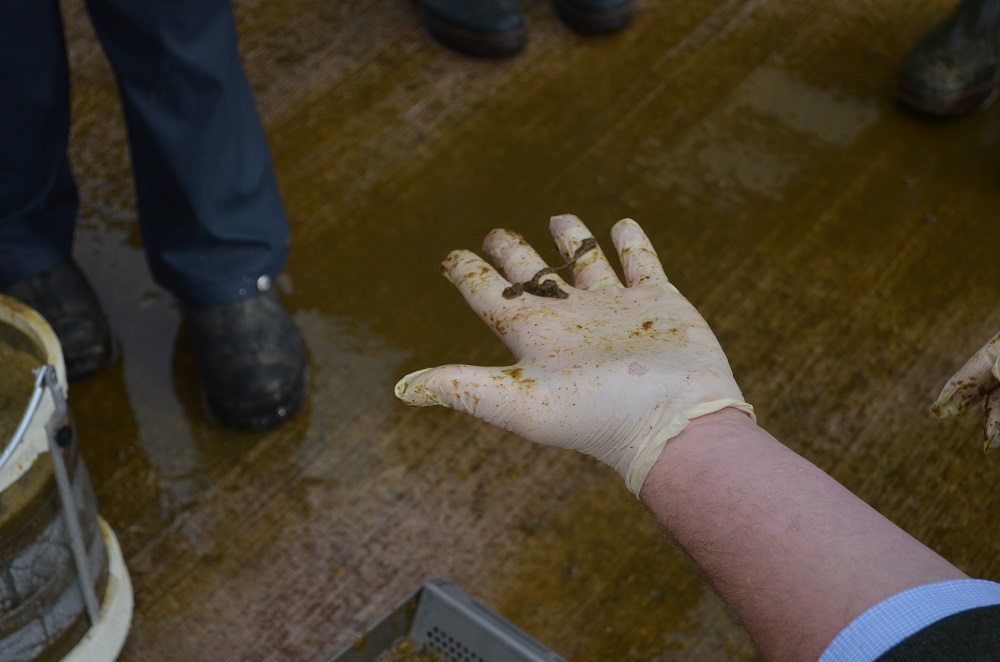Each winter presents a different set of challenges for our dairy herd particularly during the months after housing. Consider some of this season's challenges below and some suggested solutions by some of our specialist dairy team.
Grass Silage Quality
First cut silage cut earlier this season has generally analysed lower quality, whether that be lower protein due to the wet weather and reduced fertiliser applications, or lower digestibility due to higher amount of lignin accumulated over winter growth, which could mean lower energy content and a predicted milk reduction of 1-2 litres. Grass silages on average are higher in lignin this year, the indigestible portion of fibre, which when coupled with lower rumen-degradable protein means less food for the rumen microbes and therefore less metabolizable protein to the cow.
Action points: Feed the rumen bugs better!
- Consider feeding more fermentable energy such as sugar molasses or increasing starch - be mindful of rumen health.
- Yeast products such as Diamond V XP, which is a yeast metabolite, can improve rumen health and digestion of forages, as well as help hind-gut fermentation on rations higher in starch.
Lower DMI
How does your dry matter intake compare to last year? Many herds are running at lower dry matter intakes this year, and just 1kg less DMI can be worth 2 litres of milk! There may be several reasons intakes are lower, such as lower digestibility/ D Value of silages (1% lower D-Value = 1.5% less DMI), higher fibre and lignin causing rumen fill, or poor fermentation and palatability of the silage, to name just a few.
Action points: Encourage cows to consume one more meal per day.
- Push up once more or consider the time of feeding can mean 1kg more DMI.
- Increase the digestion of fibrous or lower D-Value silages in the rumen with sugar molasses, or yeast supplements such as Diamond V XP.
Maize Silage
In an ideal world, maize silage should be left for at least 8 weeks in the clamp before feeding, to ensure it reaches a stable state and the starch is degradable in the rumen. If we feed maize before this, we often find the starch coming out in the muck, undigested, because of a protein coating around each kernel which eventually degrades in the clamp to expose the starch. This is potentially lost litres, as the starch is not being utilised. In addition to this, Trouw report maize silages this year to have a higher Lignin level, which means the fibre portion is also less digestible to the rumen bugs.
Action points: If you must feed fresh maize silage, limit the overall level, and source alternative carbohydrates to feed the rumen to begin with.
- Wheat starch is rapidly degradable in the rumen, so is sugar, and both provide much-needed energy to the rumen bugs.
- Whilst the starch is less degradable in the rumen, more is passing into the small intestine, so a post-biotic supplement such as Diamond V XP can help support gut health and improve digestion of the starch in the hindgut.
Cows under condition
At the end of season grazing grass values fall away and with it can slip body condition. Dairy cattle should be routinely scored for body condition targeting 3.0 as a herd average allowing for a range between 2.75 in early lactation and 3.25 as a late lactation or dry cow. Remember cows also store fat around their internal organs “visceral fat” which is not visible on the external. Where cows have been housed under condition, we need to build up some reserves to get milk production back on track.
Actions points:
- Body condition score to establish status
- Check milk recording data for energy status and ketosis risk
- Where condition needs to be gained alter diet to favour carbohydrates and energy to replace fat reserves – contact your Wynnstay specialist for help with this.
Beware of fluke and worm issues
The fluke forecast for the UK between August – October was at a moderate level although certain pockets of higher risk were identified in certain areas. The forecast is based on rainfall and temperature and is designed to indicate the risk of the emergence of infective stages of liver fluke into pastures. Fluke attacks the main organ responsible for processing nutrients and storing key vitamins and minerals – therefore limiting production.
Action points:
- Be aware of coughing which could indicate a lungworm issue
- Test suspect thin or under-performing animals either through milk or blood
- Speak to your local Wynnstay Animal Medicines Advisor to discuss treatment options where the disease occurs















